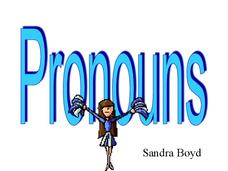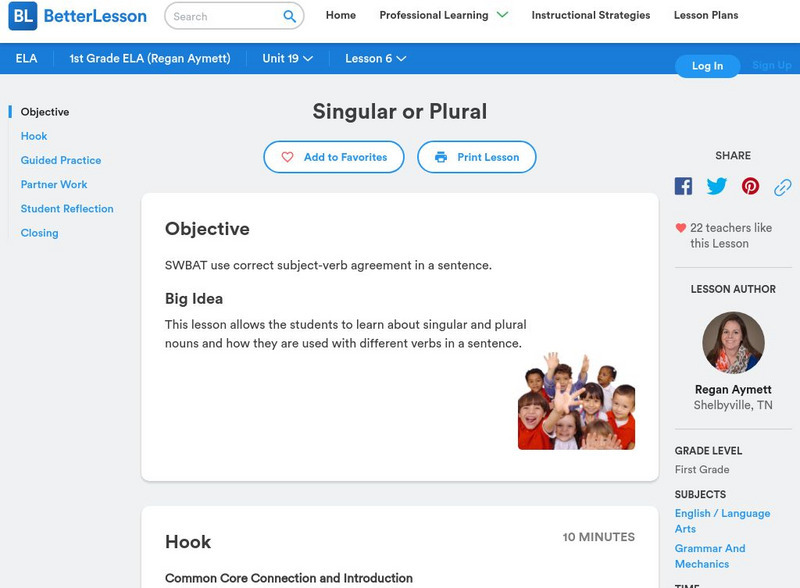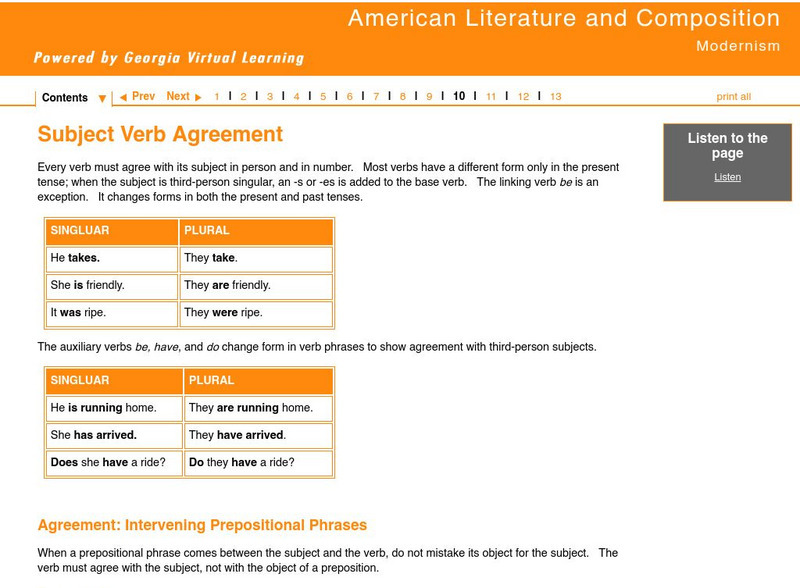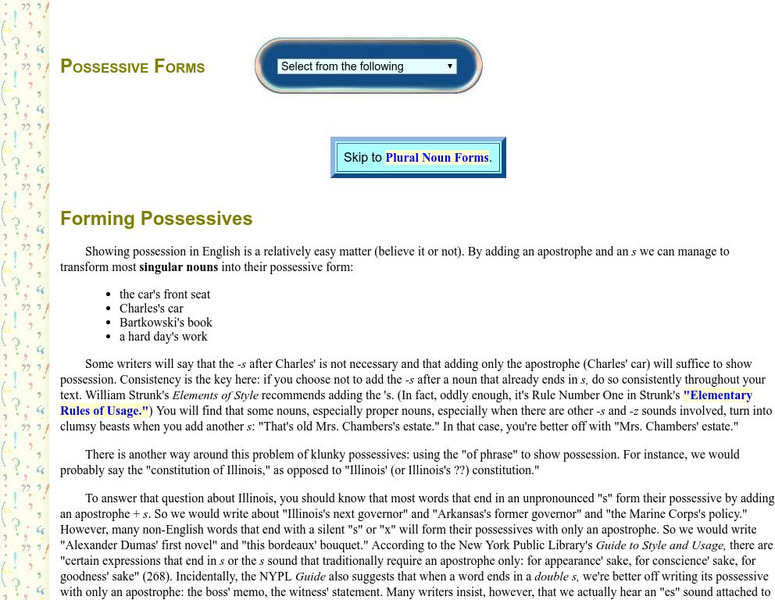Curated OER
Wacky Web Tales
Students study the parts of speech and then review them. They identify each part of speech and place them on a tree map. Then they visit a website to create a "Wacky Web Tale" using information from the tree map. They print their tales...
Curated OER
Prefixes, Un-, Re-, and, Dis-
Third graders identify prefixes and use prefixes correctly in sentences. They edit and change sentences containing prefixes.
Curated OER
Fun With Formatting
Students investigate the concept of using a word processing program with the intention of improving formatting skills like centering text. They also highlight different text sections and demonstrate how to save changes made to a document...
Curated OER
Pronouns
Subject, object personal. Possessive, reflexive, indefinite. Everything you want to know about pronouns and their antecedents is contained in a colorful 32-slide presentation.
Curated OER
Using Intensive Pronouns
Myself, yourself, and himself are intensive pronouns. Get your learners using these pronouns when writing sentences with this series of worksheets which include a reading and discussion section, examples, three practice activities, and...
Curated OER
History of English
Providing both a history of English before England (Sino-Tibetan, Finno-Ugric, Hamido-Semitic, Indo-European) and a history of English in England, this presentation includes charts and many examples of the changes in the English language...
Curated OER
Using Is/Are in Sentences
In this interactive grammar instructional activity, students choose either the word "is" or "are" from the drop down menu to complete each of the ten given sentences.
Curated OER
Pronouns and Possessive Adjectives
In this pronouns and possessive adjectives worksheet, students identify usage in sentences. In this short answer worksheet, students write sixteen answers.
Curated OER
Grammatical Person: 1st, 2nd, and 3rd Person
In this grammatical person: first, second, and third person learning exercise, students determine the speaker/participants relationship. Students use a chart to identify grammatical person in seventeen sentences.
Curated OER
Few and Less: A Confusing Pair
For this grammar worksheet, students learn the difference between the words "few" and "less" as well as adverbs and adjectives. They then answer the 14 questions on the page by inserting either few/fewer or less in the blank.
Curated OER
Publishing: A Persuasive Essay
Third graders are given an opportunity to create a visual to accompany their presentations of their persuasive essays. They may use the computer or other media as resources.
Curated OER
Word Sorts And Story Mapping
Fourth graders engage in a lesson that covers the concept of using a storymap to increase reading comprehension. They possess the prior knowledge of parts of speech from previous lessons. Students fill in the blank storymap while working...
Curated OER
Pronouns
Ninth graders define the term 'pronoun', differentiate between personal, possessive, interrogative, indefinite and demonstrative pronouns, and identify the eight parts of speech.
Curated OER
Whose Voice Do I Hear?
Fifth graders examine the power of voice in writing by completing a story using words following a particular voice. They take simple nursery rhymes, then attempt to put their own voice to a revised version. An interesting instructional...
Curated OER
Reflected: Using Reflexive pronouns
In this grammar instructional activity, students learn about reflexive pronouns in sentence writing. They then use what they read to answer the 7 questions on the page. The answers are located on the last page of the packet.
Better Lesson
Better Lesson: Singular or Plural
The Common Core Standard L.1.1.c states that the students will use singular and plural nouns in sentences with matching verbs. Students will do this in writing and speaking. This lesson allows students to write and tell the class...
Georgia Department of Education
Ga Virtual Learning: American Lit and Comp: Modernism: Subject Verb Agreement
This lesson focuses on subject verb agreement; it provides examples of agreement under a variety of circumstances and the offers a short self-assessment.
Sophia Learning
Sophia: Plurals Often Treated as Singular
This video lesson focuses on words that appear plural but take a singular verb. It discusses the rules of subject-verb agreement, and then looks at three kinds of confusing words: indefinite pronouns, collective nouns, and misleading...
Towson University
Towson University: Subject Verb Agreement
This webpage provides a list of nine rules for subject-verb agreement including examples with detailed explanations including arrows and notes as well as exceptions to the rules. It also provides links to terms which are defined with...
Sophia Learning
Sophia: Subject Verb Agreement
This tutorial focuses on subject-verb agreement in a variety of media. It provides the basic rules of subject-verb agreement with examples in textual format. It also provides a YouTube video with in-depth rules for subject-verb agreement...
Capital Community College Foundation
Guide to Grammar and Writing: Possessive Forms
As you learn possessive forms, you will also learn about gerunds, present participles, compound nouns and more. This is a very complete resource tool for this subject.
English Club
English Club: Learn English: Grammar: Verbs: Subject Verb Agreement
An explanation and examples of subject-verb agreement including the use of compound subjects, midsentence words, singular/plural nouns, inverted subjects, collective nouns, indefinite pronouns, and fractions. Links to additional...
University of Wisconsin
University of Wisconsin, Madison: Subject Verb Agreement
This excellent site explains numerous guidelines, complete with examples, for determining subject-verb agreement.
ClassFlow
Class Flow: Verb Agreement
[Free Registration/Login Required] Students will learn to re-read own writing to check for grammatical sense (coherence) and accuracy (agreement); to identify errors and to suggest alternative constructions.

























